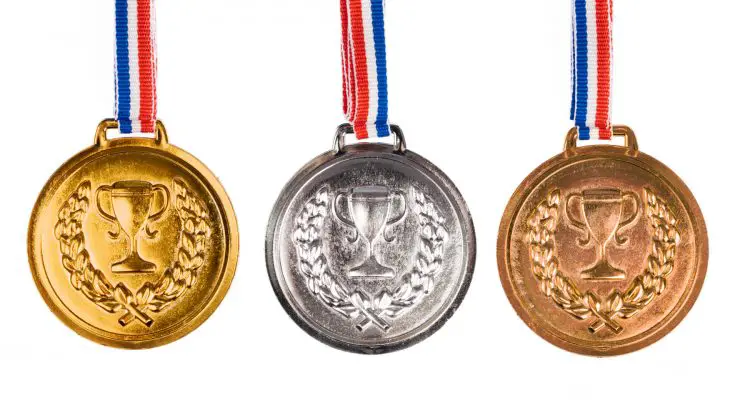Are you looking to get your hands on an Olympic medal?
If you’re a sports fan or have an affinity for the Olympics, seeing an Olympic medal might be an exciting idea. But you may be wondering — what are Olympic medals made of? And what are the most Olympic medals that one person can win?
We’ve got the answers. Keep reading to learn more about Olympic medals!
1. Bronze Medals: How They Were First Awarded
The use of bronze medals dates back to the 1896 Olympic Games, which were held in Athens, Greece. Bronze medals were awarded to third-place finishers in a variety of individual and team sports.
Since then, bronze medals have become a trademark of the Olympic games and are awarded to the third-place finisher in each event. The bronze medals are significantly heavier than the gold and silver medals and usually feature natural realistic colorations.
2. Olympic Weight: A Look into the Heft of These Medals
One of the Olympic medal facts varies from one medal to another, and it has been estimated that the most decorated Olympians can be carrying around 5 kilograms of gold, silver, and bronze medals when they are being awarded.
It is also thought that a gold medal weighs around 10 to 15 grams; an impressive feat considering the amount of effort and dedication that athletes put into their training for the games. Interestingly, Olympic medallion coins are made in three denominations, gold, silver, and bronze, but there is no official rule or regulation stating the exact weight of each.
3. The Significance of Color in Olympic Medals
The colors of an Olympic medal are symbolic and have been the same since 1928. Gold, silver, and bronze medals signify the first, second, and third place respectively. Each has a unique meaning and represents different values to the athletes and countries they represent.
The silver medal represents a second place and is also a symbol of excellence. Bronze honors athletes who achieved third place and is a sign of resilience and courage.
4. Minted in the Host Country: The Nation Behind Every Medal
Host countries for the Olympic Games mint medals for their athletes, taking into account cultural aspects and distinguishing features of their nation. Developed from silver to gold, facts about the Olympic medals are highly sought after by winning athletes who wish to commemorate their accomplishments.
The nation behind every medal is indeed very special and is typically designed with a thoughtful representation of the host country. This is why medals minted in the host country are often seen as being more iconic and memorable.
5. Recycling the Unclaimed Medals: A Tradition of Giving Them Away
Each medal has a story of part of the tradition of the Olympic fact, representing the world’s admiration and appreciation of somebody’s dedication and achievement in representing the games.
It’s incredible to think how the unclaimed medals have come full circle, with the tradition of donated medals inspiring others to do good in the world and honor the hard work and dedication of many athletes.
Explore Olympic Medals Today
The Olympics is a great event that brings a lot of incredible facts about Olympic medals. From the goldsmiths crafted to the weight of the medals, there’s a lot to learn.
It’s time to start watching the Olympics and get a closer look at these fascinating facts. Come witness history and be part of the action while learning incredible facts about Olympic medals.
If you find this post helpful, check out the rest of our blog for more!



